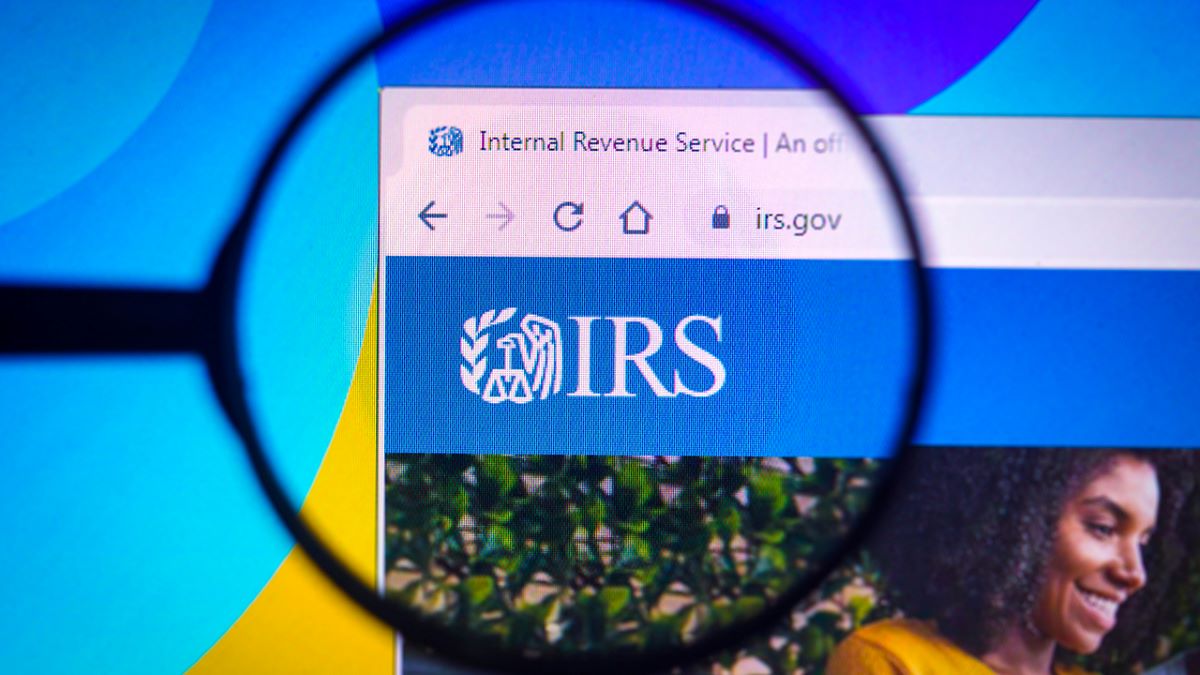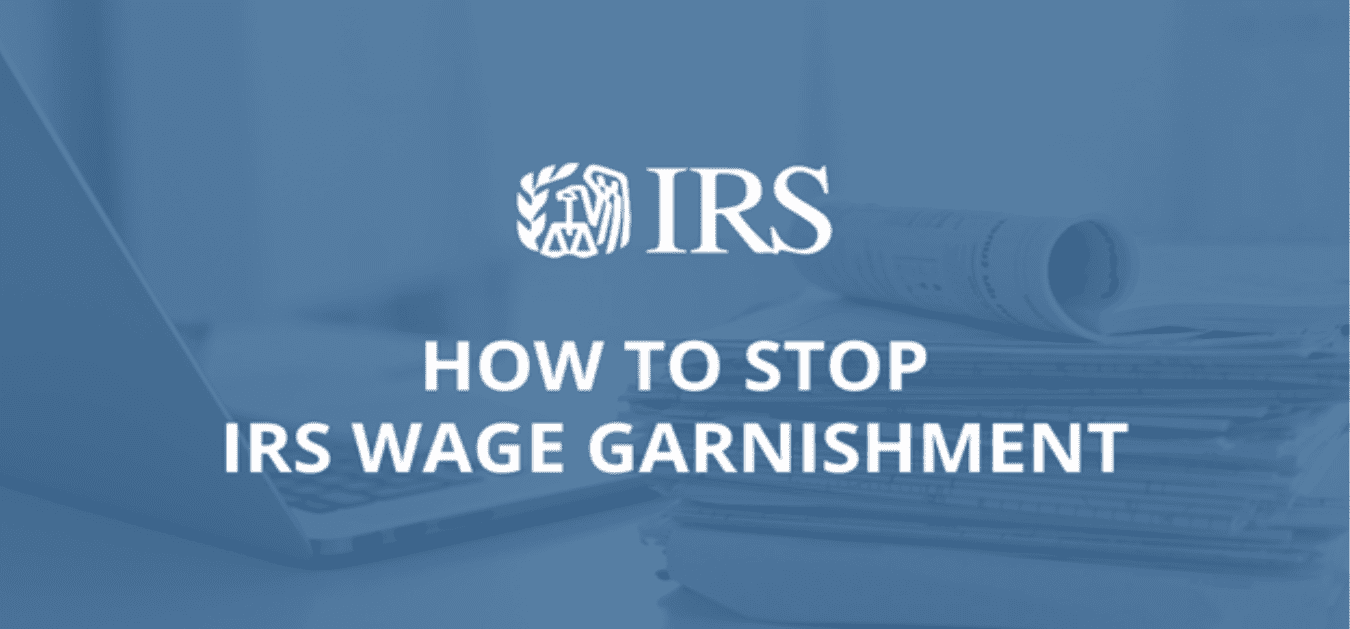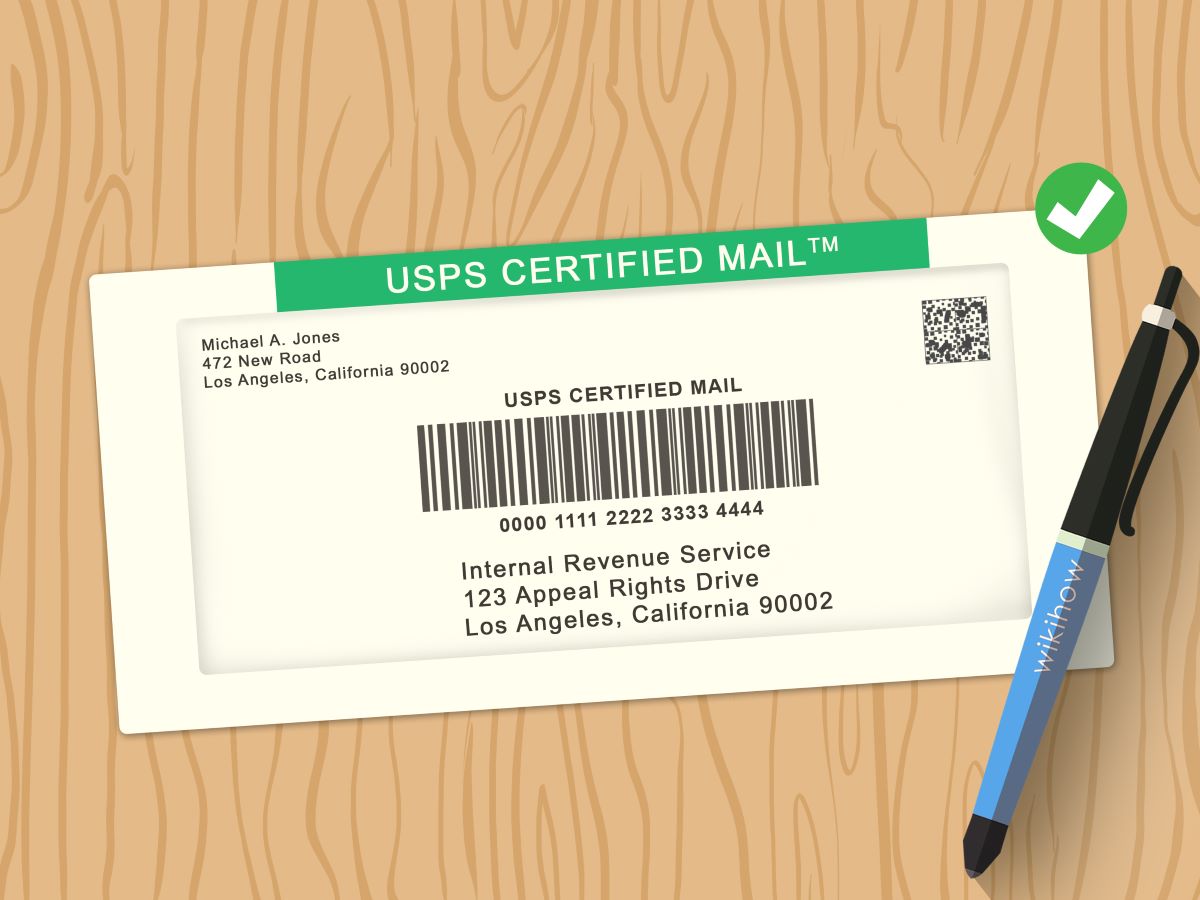

Finance
How Much Will The IRS Settle For?
Published: October 31, 2023
Wondering how much the IRS will settle for? Find out about IRS settlements and negotiate smartly with our expert advice and tips. Improve your finance game now!
(Many of the links in this article redirect to a specific reviewed product. Your purchase of these products through affiliate links helps to generate commission for LiveWell, at no extra cost. Learn more)
Table of Contents
Introduction
Dealing with the Internal Revenue Service (IRS) can be a daunting task, especially if you have outstanding tax liability. However, it is important to understand that the IRS is not solely focused on collecting every last penny owed. In certain situations, the IRS may be willing to reach a settlement, providing taxpayers with an opportunity to resolve their tax debt for less than the full amount owed.
IRS settlements are agreements between taxpayers and the IRS that allow for a resolution of unpaid taxes. These settlements can alleviate the burden of debt and provide individuals and businesses with a chance to regain control of their finances. However, it is crucial to understand the factors that influence IRS settlements and how to navigate the negotiation process effectively.
In this article, we will delve into the world of IRS settlements, exploring the factors that influence the settlement amount, options for negotiating with the IRS, and the types of settlements available to taxpayers.
So, if you’ve found yourself wondering how much the IRS might be willing to settle for, or if you’re seeking guidance on how to navigate the settlement process, you’ve come to the right place. Read on to gain a comprehensive understanding of IRS settlements and how to approach them successfully.
Understanding IRS Settlements
When it comes to IRS settlements, it’s important to understand that they are not granted to every taxpayer who owes money. The IRS carefully evaluates each case individually and considers various factors before agreeing to a settlement. In general, the purpose of an IRS settlement is to provide taxpayers with a reasonable resolution to their tax debt while also ensuring the government receives a portion of what is owed.
IRS settlements are typically reached through a negotiation process between the taxpayer and the IRS. During this process, both parties assess the taxpayer’s financial situation, ability to pay, and any extenuating circumstances that may have led to the tax debt. The goal is to find a mutually agreeable solution that satisfies both the taxpayer’s need for debt relief and the IRS’s need to collect on unpaid taxes.
It is important to note that IRS settlements are not a quick fix or a get-out-of-jail-free card. They are intended for individuals or businesses facing genuine financial hardship or other compelling circumstances. The IRS aims to strike a balance between collecting taxes owed and offering relief to those who are unable to pay their full tax liability.
There are certain factors that the IRS considers when evaluating settlement offers. These factors include the taxpayer’s assets, income, expenses, and overall financial situation. The IRS may also take into account the age and type of tax debt, as well as any efforts made by the taxpayer to resolve their liability.
IRS settlements can provide significant benefits to taxpayers. They can help to reduce the amount of tax owed, alleviate the stress of mounting debt, and prevent aggressive collection actions by the IRS, such as wage garnishments or bank levies. However, it is important to approach the settlement process with realistic expectations and a thorough understanding of your financial situation.
Next, we will explore the key factors that influence IRS settlements, giving you a deeper understanding of what the IRS looks for when considering settlement offers.
Factors Influencing IRS Settlements
When it comes to reaching an IRS settlement, several factors come into play. These factors help determine whether the IRS will agree to a reduced settlement amount and how much they are willing to accept. Understanding these factors can improve your chances of negotiating a favorable settlement with the IRS.
1. Financial Situation: The IRS will closely examine your financial situation, including your income, expenses, assets, and liabilities. They will assess your ability to pay the full tax debt and determine if you qualify for a reduced settlement based on your financial hardships. If you can demonstrate that paying the full amount would cause significant financial strain or prevent you from meeting your basic living expenses, it strengthens your case for a settlement.
2. Reasonable Collection Potential: The IRS will consider your reasonable collection potential (RCP), which is an assessment of your future income and assets. They will estimate how much they can collect from you over the remaining collection statute period. If your RCP is low and you have limited assets or earning potential, the IRS may be more willing to accept a reduced settlement.
3. Taxpayer Compliance: The IRS looks at your history of tax compliance. If you have consistently failed to file tax returns or pay taxes in the past, it may impact your eligibility for a settlement. However, if you have a history of timely compliance and have made efforts to rectify your tax situation, it can work in your favor during the negotiation process.
4. Type and Age of Tax Debt: The type of tax debt and its age can also influence the likelihood of an IRS settlement. Generally, the IRS is more willing to negotiate settlements for older tax debts as they become more difficult to collect. Additionally, certain types of tax debts, such as those resulting from a one-time financial hardship or a specific event, can be more eligible for a reduced settlement.
5. Extenuating Circumstances: If you can demonstrate extenuating circumstances that contributed to your tax debt, such as a serious illness, natural disaster, or other personal hardships, it may strengthen your case for a settlement. The IRS takes individual circumstances into account and may be more lenient in those situations.
Remember, every case is unique, and the IRS evaluates settlement offers on a case-by-case basis. It is crucial to present a strong case and provide supporting documentation to illustrate your financial hardship and show that a reduced settlement is a reasonable and appropriate resolution.
Now that we have explored the factors that influence IRS settlements, let’s dive into the process of assessing tax liability to determine the amount you owe to the IRS.
Assessing Tax Liability
In order to effectively negotiate an IRS settlement, it is essential to have a clear understanding of your tax liability. Assessing your tax liability involves evaluating the amount of taxes you owe to the IRS and determining the accuracy of the IRS’s calculations.
The first step in assessing tax liability is gathering all relevant tax documents, including W-2 forms, 1099 forms, and any other income statements. These documents provide the information necessary to accurately calculate your taxable income. It is important to ensure that you have received all relevant forms and that they accurately reflect your income for the tax year in question.
Once you have gathered your income documents, you can then calculate your total income by adding up all sources of taxable income. This includes wages, self-employment income, rental income, investment income, and any other income that is subject to federal taxation.
Next, you will need to determine your deductions and credits. Deductions are expenses that can be subtracted from your taxable income, potentially reducing your overall tax liability. Common deductions include mortgage interest, student loan interest, medical expenses, and charitable contributions. Credits, on the other hand, directly reduce your tax liability dollar-for-dollar. Examples of tax credits include the Child Tax Credit, the Earned Income Tax Credit, and the American Opportunity Credit for education expenses.
Once you have calculated your taxable income and applied any eligible deductions and credits, you can determine your tax liability by referring to the appropriate tax tables or using tax preparation software. The IRS provides tax tables or tax software that can help you calculate your tax liability based on your income, filing status, and other relevant factors.
After calculating your tax liability, it is important to review your tax return for accuracy. Double-check that all income, deductions, and credits have been accurately reported. Any errors or discrepancies could lead to an incorrect tax liability and potential IRS penalties or additional tax assessments.
If you believe the IRS has made an error in calculating your tax liability or if you are unable to pay the full amount owed, it may be necessary to seek professional assistance. A tax professional, such as a certified public accountant (CPA) or a tax attorney, can help review your tax return, assess your tax liability, and guide you through the process of resolving any issues with the IRS.
By accurately assessing your tax liability, you will have a clear understanding of the amount you owe and can make informed decisions when negotiating with the IRS for a settlement. In the next section, we will explore the options available for negotiating with the IRS to reach a mutually beneficial agreement.
Negotiating with the IRS
When it comes to negotiating with the IRS for a settlement, it’s essential to approach the process with careful planning and preparation. While negotiating with the IRS can be challenging, it is not impossible to reach a favorable agreement. Here are some tips to help you navigate the negotiation process:
1. Understand Your Rights and Options: Familiarize yourself with your rights as a taxpayer and the various settlement options available. This will help you make informed decisions and advocate for your best interests during negotiations.
2. Seek Professional Assistance: Consider engaging the services of a tax professional, such as a certified public accountant (CPA) or a tax attorney. These professionals have expertise in dealing with the IRS and can guide you through the negotiation process, provide valuable advice, and represent your interests effectively.
3. Gather Supporting Documentation: Compile all relevant financial documents and supporting materials to substantiate your financial hardships or extenuating circumstances. This includes income statements, bank statements, medical bills, and any other evidence that supports your case for a reduced settlement.
4. Open Communication Channels: Establish open lines of communication with the IRS and maintain a professional and respectful demeanor throughout the negotiation process. Respond to any requests for information or documentation promptly and thoroughly.
5. Propose a Reasonable Settlement Offer: Based on your financial situation and tax liability, propose a settlement offer that is realistic and reasonable. Consider how much you can afford to pay and present a well-supported argument for why the IRS should accept your offer.
6. Consider an Offer in Compromise: An Offer in Compromise (OIC) is a settlement option that allows taxpayers to settle their tax debt for less than the full amount owed. The IRS considers factors such as your ability to pay, income, expenses, and asset equity in evaluating an OIC. If you meet the eligibility criteria, an OIC can be a viable option to explore.
7. Explore Installment Agreements: If you cannot pay your tax debt in full, consider proposing an installment agreement with the IRS. This allows you to make monthly payments over an extended period until the debt is paid off. Work with the IRS to negotiate affordable monthly payment terms that fit your financial situation.
8. Currently Not Collectible (CNC) Status: If you are experiencing extreme financial hardship and are unable to pay your tax debt, you may qualify for Currently Not Collectible (CNC) status. This means that the IRS temporarily suspends collection efforts until your financial situation improves. While this does not eliminate your tax debt, it provides temporary relief.
Remember, negotiating with the IRS requires patience, persistence, and a willingness to cooperate. Be prepared for the possibility of multiple rounds of negotiation and provide any requested information promptly. By approaching negotiations with a well-prepared strategy and seeking professional guidance, you increase your chances of reaching a mutually beneficial agreement with the IRS.
In the next section, we will explore the different types of IRS settlements available to taxpayers.
Types of IRS Settlements
When it comes to resolving tax debt, the IRS offers various types of settlements to provide relief to taxpayers who find themselves unable to pay their full tax liability. Understanding these different settlement options can help you determine which one is most suitable for your specific situation. Here are the main types of IRS settlements:
1. Offer in Compromise (OIC): An Offer in Compromise is the most well-known type of IRS settlement. It allows taxpayers to settle their tax debt for less than the full amount owed. To qualify for an OIC, you must demonstrate that paying the full amount would cause financial hardship or that there is doubt as to whether the full tax liability can be collected. The IRS evaluates factors such as your income, expenses, assets, and future earning potential to assess your ability to pay. If the IRS determines that your offer is the most they can expect to collect, they may accept an OIC.
2. Installment Agreement: An Installment Agreement allows taxpayers to pay their tax debt in monthly installments over an extended period of time. With an installment agreement, you agree to make regular payments until the debt is fully paid off, including any penalties and interest. The IRS offers different types of installment agreements, including streamlined agreements for debts under a certain threshold and partial payment installment agreements for taxpayers who cannot afford to pay the full amount owed.
3. Currently Not Collectible (CNC) Status: If you are experiencing extreme financial hardship and are unable to pay your tax debt, you may qualify for Currently Not Collectible (CNC) status. This means that the IRS temporarily suspends collection efforts until your financial situation improves. While the tax debt remains, the IRS will not actively pursue collection actions. However, this status is not a permanent solution, and the IRS may review your financial situation periodically to determine if your ability to pay has changed.
4. Penalty Abatement: In certain cases, the IRS may grant penalty abatement, reducing or eliminating the penalties associated with unpaid taxes. Penalty abatement is typically granted when the taxpayer can show reasonable cause for the failure to pay, such as a serious illness, natural disaster, or other extraordinary circumstances. It is important to note that penalty abatement does not reduce the underlying tax liability, only the associated penalties.
It is crucial to note that IRS settlements are not guaranteed and depend on your specific financial situation and ability to pay. Each settlement option has its own eligibility requirements and conditions that must be met. Working with a tax professional can help you navigate the complexities of the settlement process and increase your chances of reaching a favorable agreement with the IRS.
In the next section, we will discuss penalties and interest that may be incurred with unpaid taxes and how they can affect your tax debt.
Offer in Compromise
An Offer in Compromise (OIC) is a settlement option provided by the IRS that allows taxpayers to settle their tax debt for less than the full amount owed. This program aims to provide individuals and businesses with a fresh start by offering them a reasonable resolution to their tax liability.
To qualify for an Offer in Compromise, you must demonstrate that paying the full amount would cause financial hardship or that there is doubt as to whether the full tax liability can be collected. The IRS assesses your financial situation by considering factors such as your income, expenses, assets, and future earning potential.
The OIC application process requires you to submit detailed financial information, including income statements, bank statements, and a statement of your monthly living expenses. You will also need to provide supporting documentation to demonstrate your inability to pay the full tax debt. This may include medical bills, proof of unemployment, or other evidence that supports your financial hardship claim.
Once your application is submitted, the IRS will review your offer and determine its acceptance or rejection. If your offer is accepted, you will have the opportunity to settle your tax debt for a reduced amount. The IRS may agree to accept a lump sum payment or offer you a payment plan spread over several months or years.
It is important to note that the IRS carefully evaluates OIC applications and not all offers are accepted. The acceptance rate for OICs is relatively low, as the IRS wants to ensure that the settlement amount is the maximum they can expect to collect from the taxpayer. Therefore, it is crucial to present a strong case and provide compelling evidence that supports your offer amount.
Engaging the services of a tax professional, such as a tax attorney or a certified public accountant (CPA), can greatly enhance your chances of a successful OIC. These professionals have experience in negotiating with the IRS and can help you navigate the complex application process, gather the necessary documentation, and present a persuasive case to support your offer.
It is important to understand that if your OIC is accepted, you are required to fulfill certain obligations. You must remain in compliance with all tax obligations for the next five years, including filing your tax returns and paying any taxes owed on time. Failing to meet these obligations may result in the IRS revoking the accepted offer and reinstating your original tax liability.
Overall, an Offer in Compromise provides eligible taxpayers with an opportunity to settle their tax debt for a reduced amount and achieve financial relief. By thoroughly understanding the eligibility requirements, submitting a strong application, and seeking professional guidance, you can increase the likelihood of a successful offer acceptance.
In the next section, we will discuss another option for resolving tax debt – installment agreements.
Installment Agreements
For individuals and businesses unable to pay their tax debt in full, an Installment Agreement serves as an option to resolve the outstanding liability. This arrangement allows taxpayers to pay off their tax debt through affordable monthly installments over an extended period of time.
An Installment Agreement is a formal agreement between the taxpayer and the IRS that outlines the payment schedule and terms. The IRS offers different types of installment agreements to accommodate varying financial circumstances:
1. Streamlined Installment Agreement: This type of agreement is available for taxpayers who owe less than a certain threshold (typically $50,000). Under a streamlined installment agreement, you are not required to provide financial documentation to the IRS. Instead, you propose a monthly payment amount based on your ability to pay, and as long as your proposed payment covers the minimum requirement set by the IRS, the agreement is likely to be approved.
2. Partial Payment Installment Agreement (PPIA): A PPIA is suitable for taxpayers who cannot afford to pay their full tax debt and do not qualify for an Offer in Compromise. With a PPIA, you propose a monthly payment amount based on your financial situation and ability to pay. To secure a PPIA, you must provide detailed financial information to the IRS, including income, expenses, assets, and liabilities. The IRS then assesses your financial status and determines an affordable monthly payment amount.
3. Non-streamlined Installment Agreement: If your tax debt exceeds the threshold for a streamlined agreement or you need a longer repayment period, a non-streamlined installment agreement is an option. This type of agreement requires providing detailed financial information to the IRS. The IRS will evaluate your financial situation and negotiate a monthly payment amount that is reasonable based on your ability to pay.
When entering into an installment agreement, it is essential to consider your financial capacity and propose a monthly payment amount that you can comfortably afford. It is important to note that interest and penalties will continue to accrue on the outstanding balance until it is fully paid.
To apply for an installment agreement, you can use the IRS’s Online Payment Agreement tool or complete Form 9465, Installment Agreement Request. It is advisable to seek professional assistance from a tax professional who can guide you through the application process, help you gather the required documentation, and negotiate with the IRS on your behalf.
It is important to honor the terms of the installment agreement once it is approved. This includes making the monthly payments on time and filing all future tax returns by the designated due dates. Failure to comply with the terms may result in defaulting on the agreement and potential collection actions by the IRS.
Overall, installment agreements provide taxpayers with a reasonable and structured approach to pay off their tax debt over time. By understanding the different types of installment agreements available and working with a tax professional, you can find a solution that fits your financial situation and helps you regain control of your tax obligations.
In the next section, we will discuss an alternative option for taxpayers facing significant financial hardships – Currently Not Collectible (CNC) status.
Currently Not Collectible Status
For individuals and businesses facing significant financial hardships, Currently Not Collectible (CNC) status offers temporary relief from IRS collection efforts. When a taxpayer is deemed Currently Not Collectible, the IRS halts active collection actions, giving the taxpayer time to regain their financial footing.
To qualify for Currently Not Collectible status, you must demonstrate to the IRS that paying your tax debt would cause undue financial hardship. This may involve providing detailed information about your income, expenses, assets, and liabilities. Factors such as income levels below the poverty guidelines, substantial medical expenses, or other compelling circumstances can support your case for Currently Not Collectible status.
If the IRS approves your request for Currently Not Collectible status, they will temporarily suspend collection activities, such as levies and garnishments. However, it is important to note that the tax liability remains, and interest and penalties may continue to accrue during this period.
While in Currently Not Collectible status, the IRS may periodically review your financial situation to determine if your ability to pay has changed. They may request updated financial information to reassess your status. If your financial situation improves, the IRS may remove your Currently Not Collectible status and resume collection activities.
It is important to understand that Currently Not Collectible status is not a permanent solution to your tax debt. It is a temporary reprieve from active collection actions. If your financial situation improves in the future, the IRS may resume collection efforts.
While in Currently Not Collectible status, it is crucial to remain in compliance with all tax obligations, including filing tax returns on time and making any required estimated tax payments. Failure to comply with these obligations may result in the IRS revoking your Currently Not Collectible status.
If your financial situation does not improve and you remain unable to pay your tax debt, the IRS may consider other alternatives, such as an Offer in Compromise or an installment agreement, to help you resolve your tax liability.
Seeking professional assistance from a tax professional, such as a tax attorney or a certified public accountant (CPA), can greatly assist you in navigating the Currently Not Collectible status process. They can help you gather the necessary financial documentation, present a compelling case to the IRS, and ensure that you remain in compliance with all tax obligations during this temporary reprieve.
In the next section, we will discuss the impact of penalties and interest on your tax debt and the importance of addressing them promptly.
Penalties and Interest
When it comes to unpaid taxes, the IRS imposes penalties and interest that can significantly increase the amount you owe. Understanding the impact of penalties and interest is crucial when addressing your tax debt and seeking a resolution with the IRS.
1. Penalties: The IRS imposes various penalties for different types of tax non-compliance. The most common penalties include:
- Failure to File Penalty: This penalty is assessed when a taxpayer fails to submit their tax return by the designated deadline. The penalty is calculated based on a percentage of the unpaid tax amount for each month or partial month the return is late.
- Failure to Pay Penalty: If you do not pay your tax balance by the return due date, the IRS will assess a failure to pay penalty. This penalty is typically a percentage of the unpaid tax amount for each month or partial month the tax remains unpaid.
- Accuracy-Related Penalty: The accuracy-related penalty is imposed if you make significant errors on your tax return that result in underpayment of taxes. This penalty is usually a percentage of the underpayment caused by the error.
2. Interest: In addition to penalties, the IRS charges interest on unpaid tax balances. The interest rate is determined by federal law and is typically compounded daily. Interest accrues on the unpaid tax balance, including any penalties assessed, from the due date of the return until the tax debt is paid in full.
Both penalties and interest can significantly increase your tax liability over time. It is important to address these additional costs promptly to minimize their impact on your overall debt.
When negotiating with the IRS for a settlement, such as an Offer in Compromise or an Installment Agreement, it is crucial to consider both the tax liability and the associated penalties and interest. In some cases, the IRS may be willing to abate or reduce penalties if you can demonstrate reasonable cause for your tax non-compliance, such as a serious illness or an unavoidable circumstance.
Addressing your tax debt early and proactively can help mitigate the impact of penalties and interest. Whether you choose to negotiate a settlement with the IRS or pursue other options, it is important to take action and work towards resolving your tax debt to minimize the accumulation of additional costs.
Consulting with a tax professional can be beneficial when dealing with penalties and interest. They can help you understand the specific penalties assessed, explore any options for penalty relief, and guide you through the process of resolving your tax debt in the most effective and cost-efficient manner.
Final Thoughts
Resolving tax debt can be a challenging process, but it is not insurmountable. Understanding the different types of IRS settlements, such as Offers in Compromise and Installment Agreements, and the eligibility criteria for each can guide you towards the most appropriate path for resolving your tax liability. Seeking professional assistance from a tax professional can provide valuable expertise and support as you navigate the negotiation process with the IRS.
Remember to gather all necessary financial documentation, accurately assess your tax liability, and consider all relevant factors that may influence an IRS settlement. By taking a proactive approach and working towards a resolution, you can alleviate the burden of tax debt and regain control of your financial future.
Disclaimer: This article is for informational purposes only and should not be taken as legal or financial advice. Consult with a tax professional or legal advisor for guidance specific to your situation.
Final Thoughts
Resolving tax debt can be a stressful and overwhelming experience, but it is important to remember that there are options available to help you regain control of your financial situation. Understanding the different types of IRS settlements, such as Offers in Compromise, Installment Agreements, and Currently Not Collectible status, can provide you with the tools and knowledge necessary to negotiate a favorable resolution.
When dealing with the IRS, it is crucial to approach the process with careful planning and preparation. Gather all relevant financial documents, seek professional assistance if needed, and be proactive in addressing your tax liability. By providing accurate and detailed financial information to the IRS, you can present a compelling case for a reduced settlement amount or a manageable payment plan.
Throughout the negotiation process, open communication with the IRS is paramount. Respond to any requests for information or documentation promptly, and maintain a professional and respectful demeanor. Establishing a cooperative relationship with the IRS can improve your chances of reaching a mutually beneficial agreement.
It is important to remember that penalties and interest can significantly increase your tax liability over time. Addressing your tax debt as early as possible can help minimize the impact of these additional costs. Seek professional assistance to explore penalty relief options and develop a plan to resolve your tax debt in the most effective and efficient manner.
Lastly, while working towards a settlement with the IRS, it is crucial to remain in compliance with all tax obligations. File your tax returns on time, make any required estimated tax payments, and meet the terms of any negotiated settlements. Failure to comply with these obligations may jeopardize the progress you have made in resolving your tax debt.
Remember that each tax situation is unique, and the information provided in this article should not be taken as legal or financial advice. Consult with a tax professional or legal advisor who can provide guidance tailored to your specific circumstances.
Resolving tax debt can be a challenging journey, but with careful planning, professional assistance, and a proactive approach, you can navigate the process successfully and alleviate the burden of tax debt. Take the necessary steps to address your tax liability, regain control of your finances, and move towards a brighter financial future.














